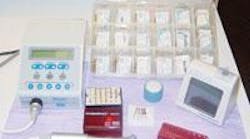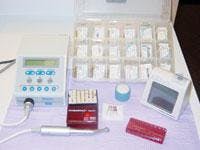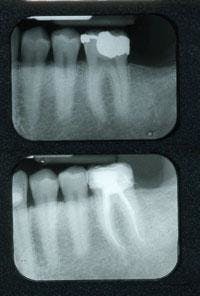There really is an easy way to do endo. Really.
WRITTEN BY
Lori Hare, DDS
Are you incorporating root canal treatment into your everyday practice of general dentistry? Looking back to the days when I was just starting to build a practice, I recall contemplating which areas of dentistry I felt the most prepared and comfortable to perform. One area that often left me feeling mystified, and even somewhat intimidated at times, was the field of endodontics. I remember thinking, and sometimes actually hoping, that maybe the need for root canals would not arise very often.
I suspect that many dentists, as is the case with me, tend to bury a lot of dental school memories deep in their past. As I reflect on my past apprehension with endodontics, however, it becomes quite clear to me that this unnecessary anxiety began to develop during my early years of training. I remember my days in the Operative Clinic and the stress of meeting those grueling requirements and completing a certain number of Class II restorations. But on top of that pressure, I developed a deep fear of seeing the pulp. I’m not just talking about the dreaded fear of a mechanical exposure; I was just as worried about a carious exposure.
One time when I was removing an ancient amalgam from an upper left premolar, and it seemed as if there were no end to the decay, the outcome became inevitable. My instructor must have sensed the sickness I felt in the pit of my stomach and seen the fear on my face, because he took one look at me and immediately offered to take over. So there it was, the head of the Operative Clinic assisting me in my first carious pulp exposure. With the way things were set up at the time, dealing with this situation was a major issue! I then had to report immediately to the Endo Clinic. With all of the steps involved in leaving the Operative Clinic, there was nothing “immediate” about the process. It meant packing up a large tackle box full of dental equipment and supplies, cleaning and disinfecting the chair my patient was occupying, filling out countless pieces of paperwork, and acquiring even more signatures just to walk out the door. To top it all off, I had to walk up two flights of stairs to reach the Endo Clinic.
After arriving at the Endo Clinic, I soon discovered my real fear was actually performing the root canal. Now, I certainly couldn’t place all blame for this dreaded fear of endodontic procedures on the Operative Clinic. Let’s face it; with the hand instrumentation at that time being the only technique taught, root canals were no easy task. They were tedious and time-consuming, especially in those early stages of my dental training. Of all the clinical requirements to be completed, I believe the Endo Clinic had the fewest. Consequently, the result was that I left dental school lacking the confidence to comfortably incorporate root canal treatment into my practice. Contrary to what I was hoping would be the case, I soon found that the need for root canals appeared almost daily in the small community where I began my practice.
As my practice was faced with more and more endodontic cases, along with continual protest from my patients when told they would have to drive 40 minutes to the nearest endodontist, the need to provide this endodontic service in my office became critical. So I did just that. I utilized hand instrumentation and the method I learned in dental school, and I came to the same conclusion - root canals are not easy. Not only were they tedious and time-consuming, but I often found myself very anxious while performing the procedures. Furthermore, I began to question whether or not the results met my high standards and expectations. If I was going to continue to offer endodontics in my practice, I had to find a better way. With all of the resources available, there had to be ways to simplify the procedure, improve my skills, and increase my confidence.
My journey into discovering endodontic ease began 12 years ago and continues to this day. It all got started with learning about alternative methods of obturation, and the door opened to new revelations from that point forward. I have since come to the realization that, with continual advancements and improvements in dentistry, there are countless ways to make root canal treatment easier and more enjoyable.
If you are a general practitioner unsure how to provide endodontic services with confidence, the means to do so are readily available. As a starting point, there are countless continuing-education courses addressing endodontic issues that commonly arise in a general practice setting. Topics often include case selection, anesthesia problems and solutions, access preparation, cleaning, and obturation.
The most significant endodontic development in my experience has been the advent of nickel titanium (“NiTi”) rotary instrumentation. Thankfully, there is no longer the need for tedious hand instrumentation alone. Several supply companies now offer rotary instruments for endodontic procedures (Dentsply Tulsa Dental, Sybron Endo, Brasseler, Guidance Endo, Ultradent, Miltex, and LightSpeed). Although they tend to differ somewhat in their technical design, they all capitalize on the same concept. The rotary system that best suits my personal needs is the ProSystem GT, distributed by Dentsply Tulsa Dental. Regardless of the manufacturer, all rotary instrumentation devices make endodontic procedures simpler, faster, and more predictable (Figure 1).
In addition to regularly offered didactic courses, the availability of hands-on courses is also seemingly endless. I recently participated in such a course offered by Dentsply Tulsa Dental that allowed me to work with the rotary instruments before purchasing them. The class gave me the confidence I needed to incorporate the new technology into my practice. After learning the system-based approach offered by Dentsply Tulsa Dental, I found the company representative to be a valuable resource in furthering my mastery of the new instrument. Fortunately, the level of service associated with buying this equipment has made technical assistance readily available whenever I need it.
Figure 2 - molar endo
Along with perfected instrumentation, there have also been significant advancements associated with obturation methods and devices that simplify the obturation process. I have found thermal carriers (Dentsply Tulsa Dental and Axis) to work best for my practice. I have also taken advantage of other useful accessory devices that have become available over the last several years, such as incorporating an electric handpiece and an apex locator (Root ZX II - Dentsply Tulsa Dental and J. Morita USA).
As a result of these discoveries, my fear of the pulp and dread of performing root canals are now distant memories (Figure 2). I now practice endodontics in fewer steps while achieving great results for my patients (Figure 3). Root canal treatment can and should be a part of every general practice. Endodontics is a procedure that is not only enjoyable, but satisfying and profitable as well. The phenomenal growth in endodontic technology and the myriad of resources available to improve our knowledge and simplify root canal procedures have paved new roads for the general practitioner. And with each new product that is introduced, endodontics will continue to become more simplified. If you have been avoiding endodontics in your office, maybe it’s time to start your own journey toward discovering endodontic ease. ■
Reference
• Koch K, Brave D. Real world endo: design features of rotary files and how they affect clinical performance. Oral Health, Feb. 2002.
Lori Hare, DDS
Dr. Hare is the founding partner of Healthy Smiles Family Dentistry, a general practice with offices in Claremore, Okla., and Tulsa. A graduate of the University of Oklahoma Dental School, she was awarded the Oklahoma Dental Association’s Young Dentist of the Year in 1995. Contact her at lori@healthy smilesclaremore.com.








